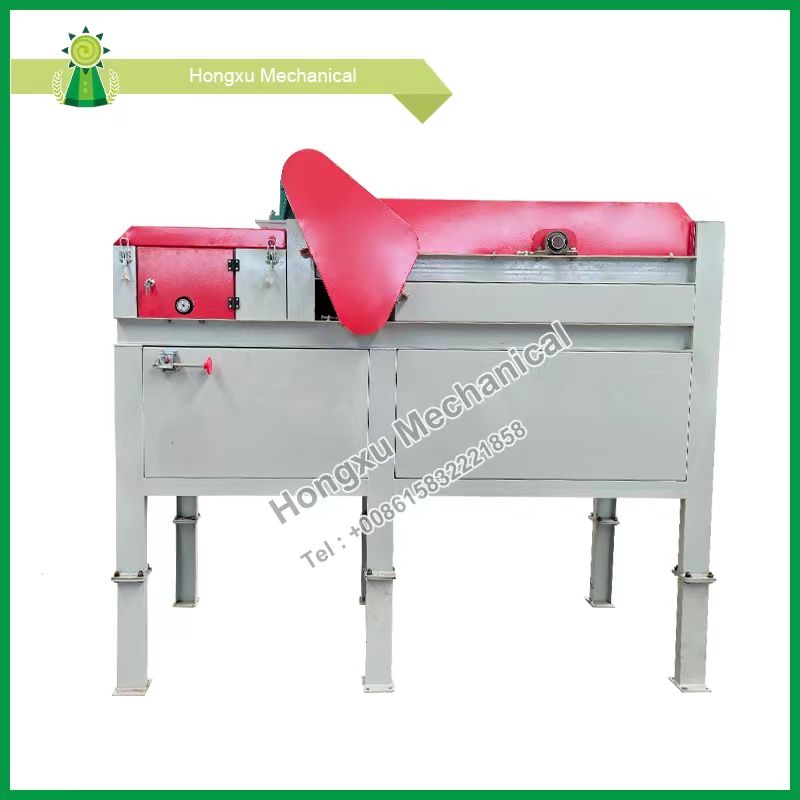Stainless Steel Sorting Machine: Revolutionizing Material Sorting
2025-04-28
In today’s fast-paced manufacturing and recycling industries, efficiency, precision, and automation are key factors that drive productivity. One of the unsung heroes behind this efficiency is the Stainless Steel Sorting Machine. These machines have become indispensable tools in various industries, helping companies streamline their processes, improve product quality, and reduce waste.

But what exactly is a stainless steel sorting machine, and why has it gained such importance? Let’s take a closer look at this innovative piece of equipment and explore how it’s transforming industries.
What is a Stainless Steel Sorting Machine?
A Stainless Steel Sorting Machine is a specialized machine used to sort stainless steel materials, often in recycling, manufacturing, or industrial applications. These machines are designed to separate stainless steel from other materials (such as plastics, aluminum, or mixed metals) with high precision. They work by detecting and sorting stainless steel items based on various characteristics, such as material composition, shape, or size.
The sorting process can be done using a variety of techniques, including magnetic separation, X-ray fluorescence (XRF) sensors, or optical sorting. These technologies enable the machine to identify stainless steel and ensure it’s properly categorized for reuse, recycling, or processing.
How Does a Stainless Steel Sorting Machine Work?
While the specific technology used can vary between machines, here’s a general breakdown of how these sorting systems operate:
1. Material Input: The material to be sorted is fed into the sorting system. This can be in the form of bulk metal scraps, waste products, or items to be processed.
2. Detection: Various sensors (like magnetic sensors or XRF) are used to detect the presence of stainless steel. These sensors are able to identify differences in material properties, such as metal composition or reflectivity.
3. Separation: Once the stainless steel is detected, the sorting machine uses mechanical mechanisms—such as air jets, vibratory conveyors, or robotic arms—to separate the stainless steel from other materials.
4. Collection: The stainless steel is then collected in separate bins or containers for further processing or recycling, while the non-metallic or unwanted materials are discarded or sent to another processing area.
Key Features of Stainless Steel Sorting Machines
1. High Precision Sorting
- Stainless steel sorting machines are known for their high accuracy in detecting and sorting metals. Whether it’s differentiating between stainless steel grades or separating it from other metals, these machines can identify even the smallest amounts of stainless steel with impressive precision.
2. Automation for Efficiency
- One of the biggest advantages of using a stainless steel sorting machine is its automation. These machines can sort materials at high speeds, reducing the need for manual labor and allowing for continuous production. Automation leads to increased efficiency, which is especially important in industries dealing with large volumes of scrap or raw materials.
3. Environmentally Friendly
- Sorting and recycling stainless steel helps reduce environmental impact. Stainless steel is a highly recyclable material, and sorting it from other metals ensures that it can be reused effectively, lowering the demand for new resources and reducing waste. By using sorting machines, industries can promote sustainability while improving resource efficiency.
4. Customizable Sorting Options
- Many stainless steel sorting machines come with customizable features that allow for sorting based on specific criteria, such as size, shape, or metal grade. This flexibility makes the machines highly adaptable for various applications across different industries.
5. Durability and Longevity
- Made from high-quality materials like stainless steel (naturally), these machines are built to withstand heavy-duty use and harsh environments. They are designed to operate for long periods without significant wear and tear, offering an excellent return on investment.
Applications of Stainless Steel Sorting Machines
Stainless steel sorting machines are used across a wide range of industries where stainless steel and other metals need to be separated or recycled. Some of the most common applications include:
1. Recycling Industry
- In recycling facilities, stainless steel sorting machines are used to separate stainless steel from other metals in scrap material. This helps ensure that stainless steel can be recycled and reused in the production of new items, which is more cost-effective and environmentally friendly than producing new stainless steel from raw materials.
2. Manufacturing and Processing
- In manufacturing settings, these machines help separate stainless steel parts or products from other materials during the production process. For example, in the automotive industry, stainless steel parts may need to be sorted from plastic or rubber components before further processing.
3. Waste Management
- Stainless steel sorting machines are often used in waste management facilities to separate metallic materials from other waste. This helps improve the efficiency of waste sorting and ensures that valuable materials like stainless steel can be recycled.
4. Food and Beverage Industry
- Stainless steel is commonly used in the food and beverage industry due to its corrosion resistance and hygiene properties. Sorting machines can be used to separate stainless steel containers, equipment, or waste from other materials for proper cleaning and reuse.
5. Construction Industry
- In construction and demolition sites, stainless steel sorting machines help separate valuable metals from debris or waste, ensuring that materials like stainless steel can be salvaged and reused for new construction projects.
Benefits of Using Stainless Steel Sorting Machines
1. Cost Savings
- By efficiently sorting stainless steel from mixed metals, companies can lower their material costs, reduce wastage, and improve recycling efficiency. This leads to significant cost savings in the long run.
2. Improved Product Quality
- Sorting stainless steel from contaminants ensures that only high-quality materials are processed, which is especially important for industries like manufacturing, where the quality of raw materials directly impacts the final product.
3. Enhanced Productivity
- The automation of the sorting process reduces the need for manual labor, speeds up production cycles, and ensures that sorting is done consistently, all of which contribute to higher overall productivity.
4. Sustainability
- By facilitating the recycling of stainless steel, sorting machines help reduce the demand for new raw materials, contributing to a more sustainable and environmentally responsible production process.
Final Thoughts
Stainless Steel Sorting Machines are an essential part of modern recycling and manufacturing processes. Whether it's for improving production efficiency, enhancing product quality, or contributing to sustainability goals, these machines offer a wide array of benefits. Their precision, automation, and durability make them a valuable investment for industries that handle stainless steel and other metals.
If you’re involved in the recycling, manufacturing, or waste management industry, incorporating a stainless steel sorting machine into your operations could lead to significant improvements in both your bottom line and your environmental impact.


